Inflation survival guide
4 things you can do now to ride out higher prices.
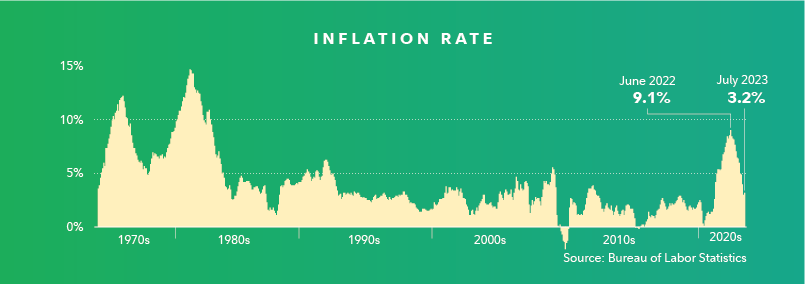
The grip of inflation has loosened considerably since last year, when the rate of inflation topped out at 9.1%. Since then, it has fallen to a much more manageable level. Still, prices are higher than they used to be, and American families are feeling it. In July, the typical American household spent $709 more than they did 2 years ago to buy the very same things, according to a new analysis from Moody’s Analytics. A year or 2 of high inflation is bad enough, but even a more normal rate of inflation—something closer to the Federal Reserve's goal of 2%—adds up over time.
Consider how $50,000 worth of annual expenses grew from 1992 to 2022, and the difference a small change in the inflation rate would have made over that period:
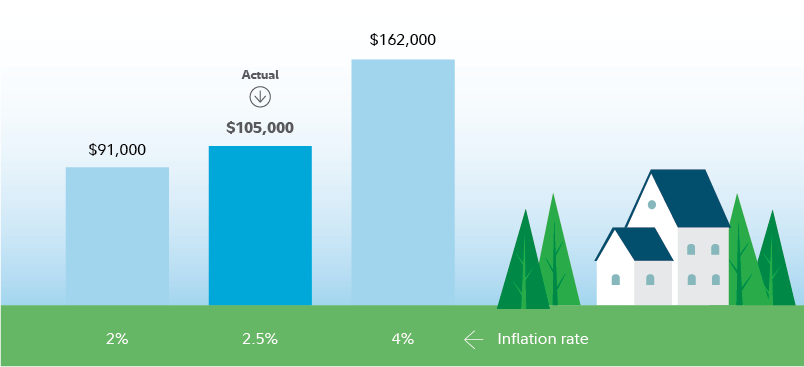
No one is sure how long inflation will stay elevated above historical averages but it could stick around longer than anyone would like. Learning how to fight inflation, now and in the future, can help make sure your spending power can keep up.
If you haven't checked in on your portfolio recently, now is a good time. As always, Fidelity suggests having a diversified mix of stocks, bonds, and other investments consistent with your personal goals. A diversified portfolio won't ensure gains or guarantee against losses. If you have a diversified portfolio filled with stocks, bonds, and short-term investments, you may already be well-protected from inflation. But within a diversified portfolio, there are a variety of ways to add inflation protection.
Investments with the potential to keep up with inflation—or exceed it—over time typically come with some risks. Historically, stocks have offered the highest average annual return of the traditional asset classes—along with more volatility—followed by bonds, and short-term investments.
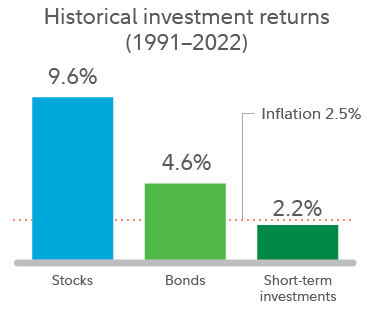
For people with a long time frame for investing, the growth potential of stocks can make the risks worth it. You may have a better chance of reaching your goals, like retirement or funding a child's education. Investing conservatively comes with its own set of risks, namely, the possibility that your money won't buy as much in the future as it does now.
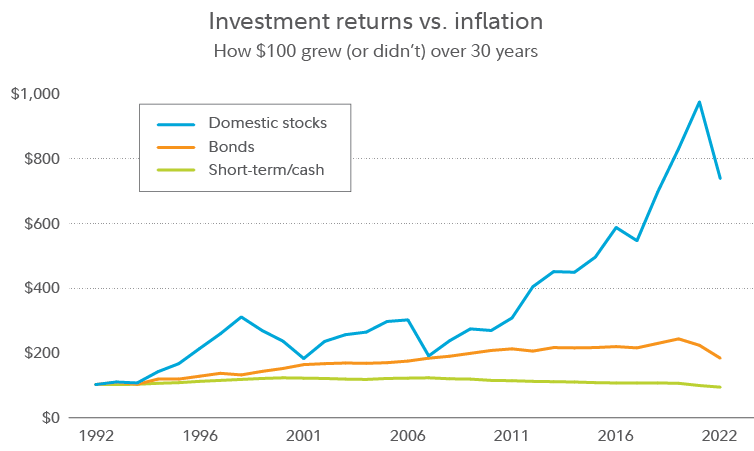
With the price of food and energy rising fast, inflation is already hitting most of us right in the budget. A recent analysis from Moody's Analytics5 found that the average household is spending almost $460 more per month because of inflation. As you look for ways to tighten your belt, keep an eye on your budget. Fidelity suggests spending no more than 50% of your take-home pay on essential expenses like food and housing, to give you room to save for retirement, plan for short-term goals, and spend on nonessentials.

The cost of essential expenses is rising much faster than discretionary items, and this means your emergency savings may need to grow too. We recommend setting aside enough money to cover 3–6 months of essential expenses in case of emergency. When you factor in the cost of inflation, is your emergency fund still sufficient?
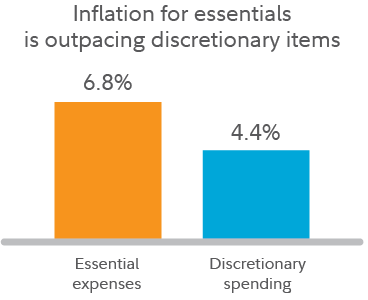
And think about where you have the money stashed. Can you earn a higher return with a relatively low risk investment that you can depend on if you do need to access it?
Now is also a good time to be sure you still have sufficient life insurance. One simple guideline is to aim for 5 to 10 times your annual salary and bonus, but prices are rising faster than income these days, so that approach could leave you with insufficient coverage.
To do a more robust calculation, start with your family's day-to-day needs—the entire amount of money it takes to run your household each month. Next, plan for larger expenses such as college, paying off student loans, a mortgage, other debts, running a business, or potential medical issues.
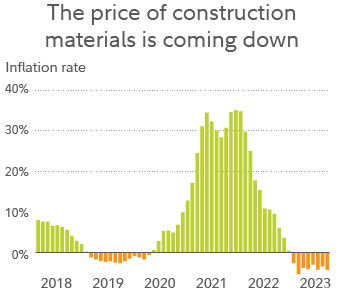
Similarly, this wouldn't be a great time to find you're underinsured at home in case of fire or theft. Although the price of construction materials has fallen since last year, prices are still far higher than they were pre-pandemic. And that's not to mention all the things in your house you might need to replace.
When the cost of everything goes up but your income stays the same, there are really only a few options. You can buy less, buy cheaper substitutes, or try to find more money.
In the long run, healthy personal finance fundamentals can be one of the best ways to help set yourself up for success in any economy. Spending less than you earn and avoiding high-interest debt can set a strong foundation for your future. Build on it by keeping money on hand for emergencies, strategies to protect what you have, and investing for growth potential. Navigating uncertainty may be easier when you focus on the things you can control.
Next steps to consider
![]()
Let's work together
We can help you create a plan for any kind of market.
![]()
Get organized, hit your goals
Create a free, flexible plan you can adjust to your life.
![]()
Read Viewpoints weekly
Sign up for our weekly email on investing, personal finance, and more.



